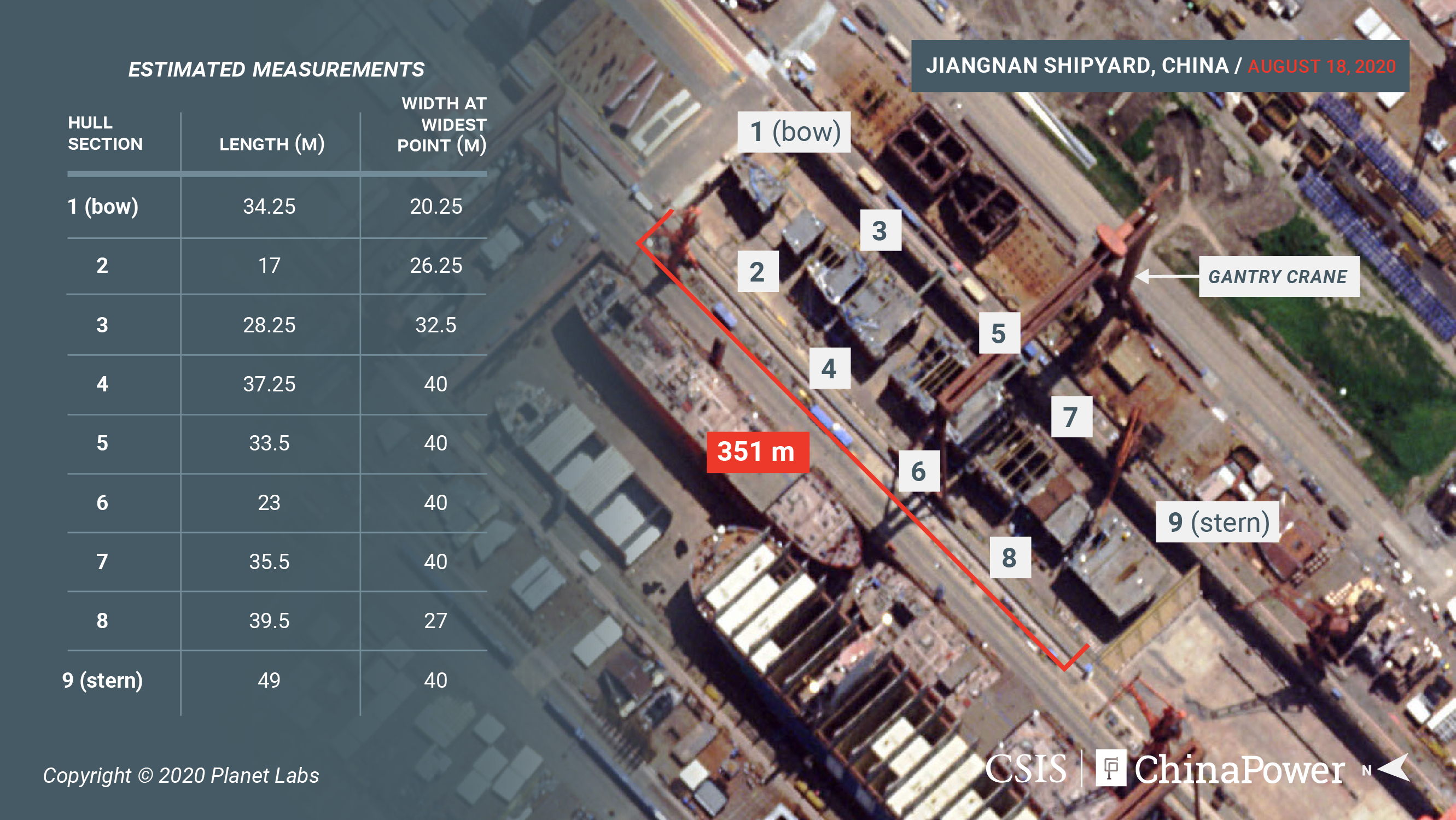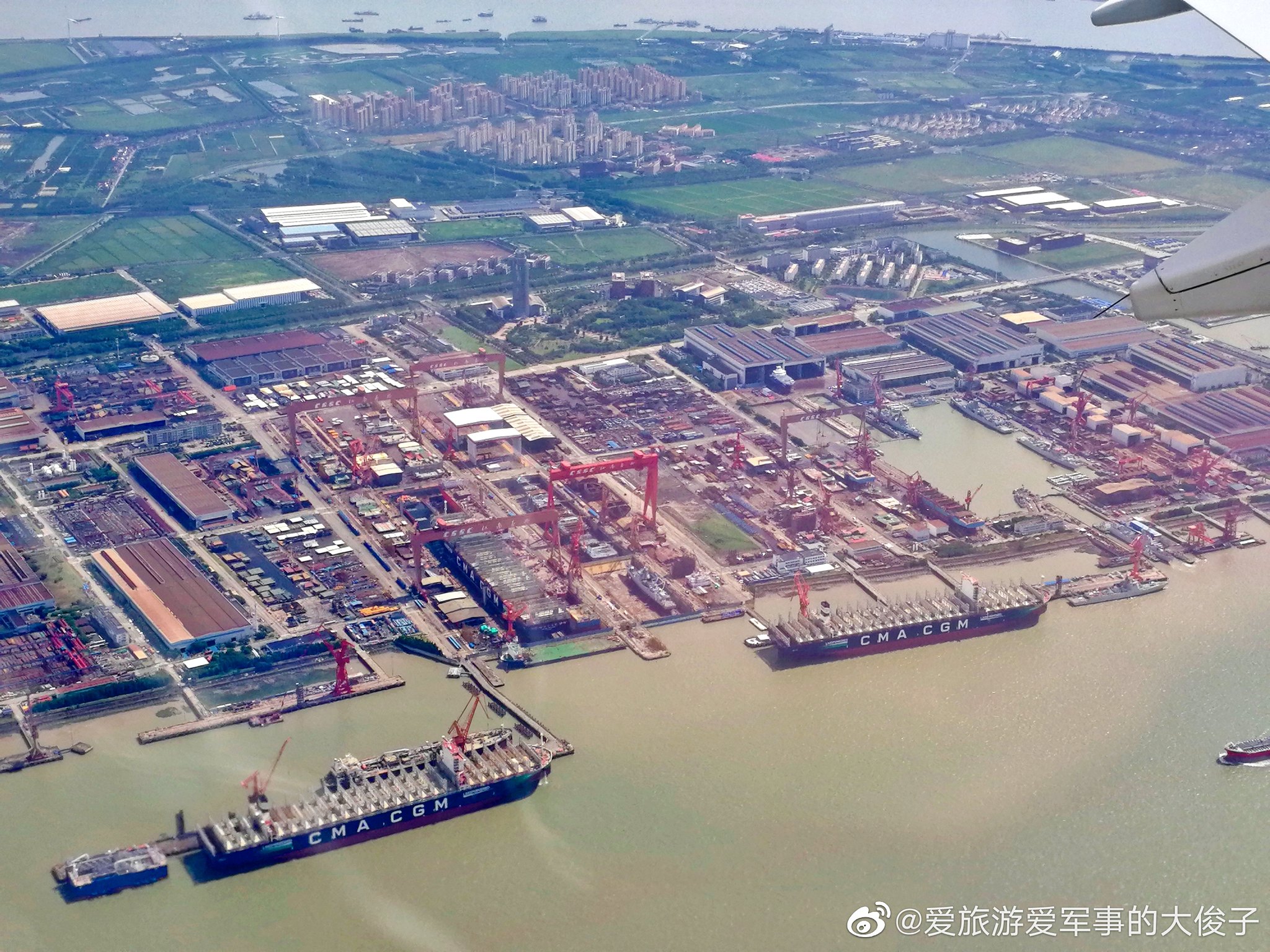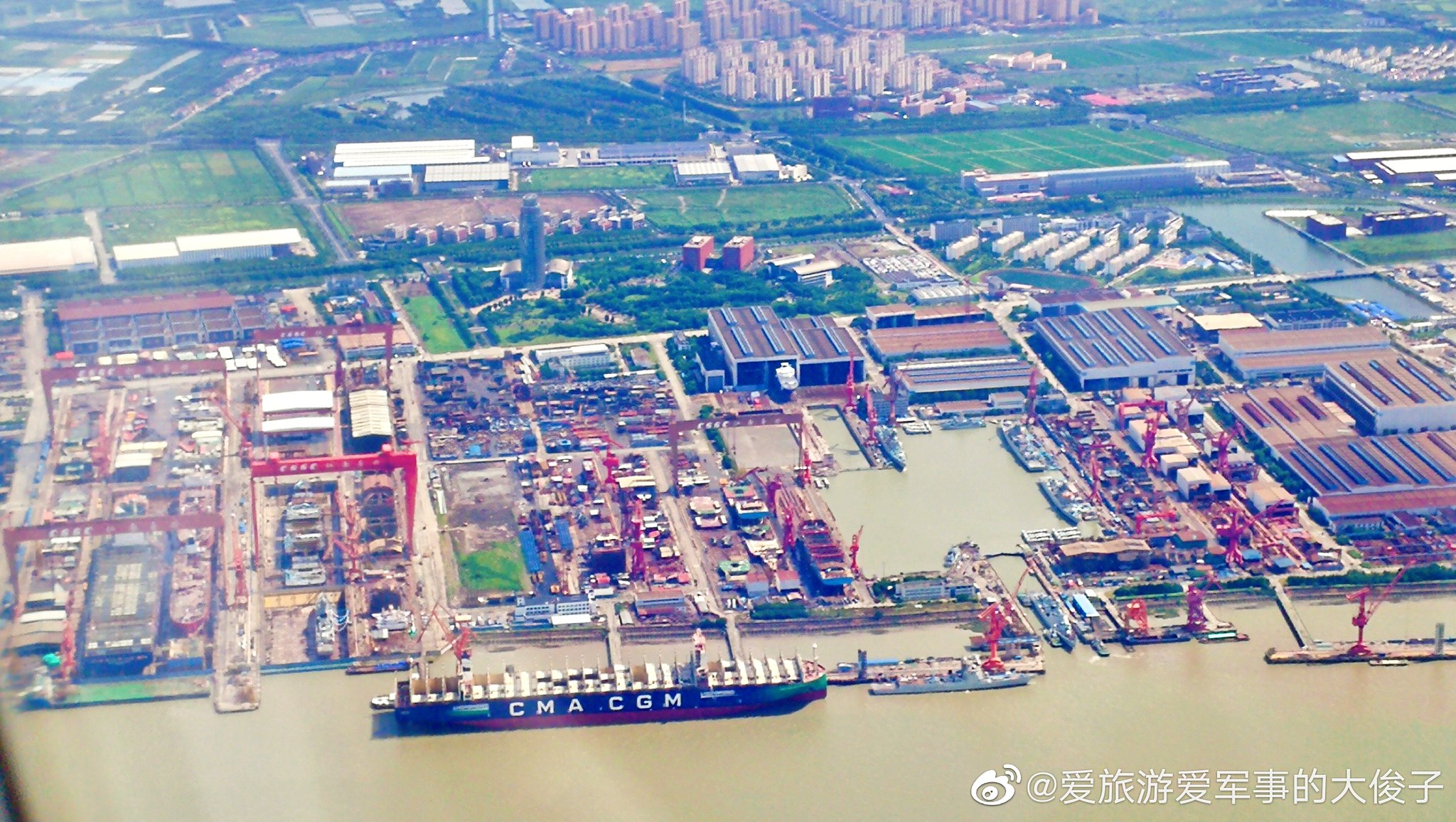That's not true, the 055 was not enlarged but the design was shrunk from origin about 20k to current 13k thanks to the advancement in technology.100K tons for CV?
By comparison, USN first CVN, Enterprise was 90K+. Nimitz class (and probably Ford class as well) are slightly above 100K+
100K tons is overkill but maybe just like how the 055 had to be enlarged to accommodate all PLAN requirements, maybe same is true here.
Expectations might be raised for it if this size is accurate such as having 4 catapults instead of 3. But just like how some expected 055 to have more than 112 VLS for its size, some expectations might not be met here as well with this carrier. But what I do I know, I'm just guy browsing through forums.
You are using an out of date browser. It may not display this or other websites correctly.
You should upgrade or use an alternative browser.
You should upgrade or use an alternative browser.
CV-18 Fujian/003 CATOBAR carrier thread
- Thread starter Jeff Head
- Start date
Even in peacetime this would be a bad idea, without an escort it would be much easier to gather intelligence on itA US carrier sailing by itself would be perfectly fine in peacetime, but not in wartime.
Suppose there is a nuclear submarine nearby?
The carrier is virtually defenseless, as it doesn't even have its own sonar set, nor even medium-range air defence missiles.
Can you explain where you got those numbers?
the length of the nine modules combined are said to be 297m in the CSIS article. I believe it is very accurate. There are at least two modules missing, one is the one I noted in above picture, another is Bulbous bow module in front. 13m - 18m for the length of the two modules should be reasonable right?
the length of the nine modules combined are said to be 297m in the CSIS article. I believe it is very accurate. There are at least two modules missing, one is the one I noted in above picture, another is Bulbous bow module in front. 13m - 18m for the length of the two modules should be reasonable right?
You mean this article?
Comparing the 2 photos, I dont think that they added any new module. I think that they just pulled the bow module closer to the one that was behind it. In fact, probably there isnt any lower module left to place there. Check post nº 4016 of this thread to see a photo montage that puts the modules together.
Intrepid
Major
The article says that the two sister ships Liaoning and Shandong are of different lengths (304.5 to 315 meters). Throw away the article, it has not been properly researched! Who knows what else is inapplicable in the article.
I put the photo from the article that you used for your post.The CSIS photo was shot on 08/18, at which time there was one module missing from what it is now:
View attachment 63672
The new module was added earlier Sep. Adding that module, waterline length should be 310m - 315m, 100k tons boy with no doubt.
It's also interesting to see CSIS always mentioned Conventional propulsion along with Electromagnetic Aircraft Launch System, but not this time.
I was wrong, mentioned in the table.

You are talking about a "new module" in yellow circle between module 1(bow) and 2, right? But you should see that in your photo there is a big gap between module 1 and the dry dock wall in front of it. This means that module 1 is moved to join module 2 in your photo. The "new module" is just a cover probably for soldering work to begin. Thea reason for the cover is that when soldering, you will need to polish the joint to remove dust and rust. During the working, there can be no rain etc.
I am afraid that the bold texts are wrong, very wrong actually. The underlined part could be the real reason of increased power demand. But certainly not because of EMALS.There are a lot of unknown factors with regards to 003. Like what is the total power consumption. In the case of the Ford-class it has two 700 MWt reactors while the previous Nimitz class had two 550 MWt reactors. Which makes it seem that EMALS and other electric systems have actually increased the power requirements versus steam. After all electric systems might be more compact, lower maintenance, have performance which leads to less aircraft airframe stress on launch, but they led to more power generation losses because you are converting heat into electricity instead of using the steam directly. Because it was unknown, when 003 was designed, which catapult system would be available, and there is no known Chinese naval nuclear reactor with the required power, it is quite likely they simply decided to go with boilers. I think it is unlikely they went for gas turbine technology because steam allows them to gain experience with the future nuclear reactor, which will also output steam, and in case EMALS turns out not to work in practice having steam boilers allows the PLAN to backpedal into the steam catapults just in case. Also the Chinese have limited experience with high enough powered naval gas turbines. The Ford class EMALS so far has not proven to work all that well. It simply does not have enough reliability and the medium time between failures is too low. While the Chinese might not have these problems with their EMALS because they did more ground testing with actual aircraft, they might run into similar issues. I suspect the EMALS on the Ford class will have to be completely replaced in a decade or less for an improved system and only then will it have the required performance, if it is possible to refit it at all without a new ship.
Using submarine naval reactors is implausible because of the displacement of the 003 which is much larger than, say, the Charles de Gaulle. Purchasing the technology abroad is also implausible because the closest reactor to the requirements is the Russian RITM-400 reactor which is supposed to have 315 MWt but it is still not in production. The smaller RITM-200 with half the power has only recently started naval propulsion tests on the Arktika Project 22220 icebreaker. While the Chinese nuclear industry should have know-how to make their own reactor they have limited experience with such large naval reactors and such a project in itself might take like 8 years to achieve if you compare it with other nuclear reactor programs. Contrary to what others said here though I do not think the nuclear icebreaker is a pre-requisite. The Chinese nuclear industry has enough expertise to directly design the required reactor and test it and its components in ground test stands I think. It would still be useful to do subscale testing on another platform but it doesn't need to be an icebreaker. They could simply use a modified hull of some other ship they can build quickly like the Type 071 hull if they do need to perform actual ship testing I think. Anyway I see little reason to think the Chinese have deviated from the supposed plan where they build two conventional powered EMALS carriers first and only afterwards build two nuclear powered EMALS carriers.
EMALS actually has less power demand in real life than steam catapult to shoot an aircraft of the same mass. This has been debated for a long time here and in other places. The saving is actually not due to the launching itself whose energy requirement is almost the same equating to the function of the terminal velocity and mass of the aircraft. The saving is because steam catapult has to be supplied with high quality steam (pressure and dryness) continuously in combat. It is even worse when you are in a high danger zone but without actual combat. In this case you have to keep that steam ready which will naturally getting cold loosing energy, but not shooting any aircraft, that is a huge operational waste. But EMALS looses its stored energy much slower, and it can be recharged much faster than making steam. That makes much less waste energy for EMALS. This is one of the primary reason to use EMALS in the first place, the other being smother ride of the aircraft.
Integrated electric propulsion should be sufficient to power a 90,000 tons carrier up to 30+ knots.100K tons for CV?
By comparison, USN first CVN, Enterprise was 90K+. Nimitz class (and probably Ford class as well) are slightly above 100K+
100K tons is overkill but maybe just like how the 055 had to be enlarged to accommodate all PLAN requirements, maybe same is true here.
Expectations might be raised for it if this size is accurate such as having 4 catapults instead of 3. But just like how some expected 055 to have more than 112 VLS for its size, some expectations might not be met here as well with this carrier. But what I do I know, I'm just guy browsing through forums.
I put the photo from the article that you used for your post.


You are talking about a "new module" in yellow circle between module 1(bow) and 2, right? But you should see that in your photo there is a big gap between module 1 and the dry dock wall in front of it. This means that module 1 is moved to join module 2 in your photo. The "new module" is just a cover probably for soldering work to begin. Thea reason for the cover is that when soldering, you will need to polish the joint to remove dust and rust. During the working, there can be no rain etc.
With the latest photo, you are right. What missing now is the bulbous bow module. Ford class waterline was only 293 meters when it lacked bulbous bow module. Ford's waterline was 317 meters long, which means that the waterline of bulbous bow module is 24 meters for Ford.





